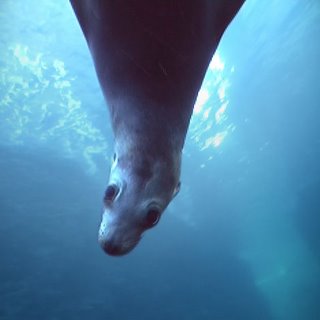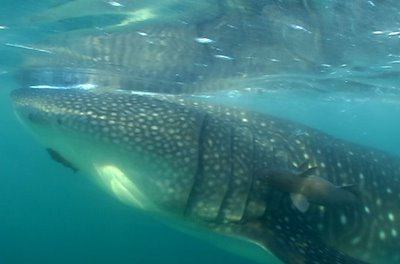Jellyfish

Jellyfish are members of the phylum Cnidaria. Members of this structurally simple marine group possess one of two body forms. Sea anemones, sea whips, corals and hydroids are polyps growing attached to rocks or other hard surfaces of the sea. Jellyfish and the Portuguese man-of- war are free-swimming medusae. Both body forms display radial symmetry with body parts radiating from a central axis. This symmetry allows jellyfish to respond to food or danger from any direction.
Jellyfish occur in a wide variety of sizes, shapes and colors. Most are semi-transparent or glassy and bell-shaped, measuring less than an inch to over a foot across the bell, although some may reach 7 feet. The tentacles of some jellyfish can reach lengths greater than 100 feet. Regardless of their size or shape, most jellyfish are very fragile, often containing less than 5% solid organic matter.
Jellyfish inhabit every major oceanic area of the world and are capable of withstanding a wide range of temperatures and salinities. Most live in shallow coastal waters, but a few inhabit
Venom Apparatus
Jellyfish are equipped with a specialized venom apparatus (cnidoblast) for defense and feeding. A capsule (nematocyst) inside the cnidoblast contains a trigger and a stinging structure. The stinging structure varies according to species, but generally consists of a hollow coiled thread with barbs lining its surface. Nematocysts are concentrated on the tentacles or oral arms. A single tentacle can have hundreds or thousands of nematocysts embedded in the epidermis. Triggers of nematocysts are activated when contact is made with another object. Pressure within the nematocyst forces the stinging thread to rapidly uncoil. The thousands of nematocysts act as small harpoons, firing into prey, injecting paralyzing toxins. Stings usually paralyze or kill only small creatures but some jellyfish are harmful to humans. Jellyfish do not "attack" humans. Stings occur when swimmers or beachcombers come in contact with nematocysts. Severity of stings depends on the species of jellyfish, the penetrating power of the nematocyst, the thickness of exposed skin of the victim and the sensitivity of the victim to the venom. The majority of stings from jellyfish occur in tropical and warm temperate waters. Most species off the southeastern coast are capable of inflicting only mild stings resulting in minor discomfort.
Treatment of Sting
Primary first aid for any jellyfish sting should be to minimize the number of nematocysts discharging into the skin and to reduce the harmful effects of the venom. If stung by a jellyfish, the victim should carefully remove the tentacles that adhere to the skin by using sand, clothing, towels, seaweed or other available materials. As long as tentacles remain on the skin, they will continue to discharge venom.
A variety of substances have been used to reduce the effects of jellyfish stings. Meat tenderizer, sugar, vinegar, plant juices and sodium bicarbonate have all been used with varying degrees of success. Methylated spirits and other forms of alcohol formerly recommended for inhibiting stinging cells actually stimulate them and may increase pain and cause severe skin reactions. Picric acid and human urine also cause a discharge of nematocysts and should not be used. Victims of serious stings should make every effort to get out of the water as soon as possible to avoid drowning. If swelling and pain from more serious stings persists, prompt medical attention should be sought. Recovery periods can vary from several minutes to several weeks.
Prevention
Care should be taken when swimming in areas where dangerous jellies are known to exist or when an abundance of jellies of any type is present. Keep in mind that tentacles of some species may trail a great distance from the body of the organism and should be given lots of room. Stings, resulting from remnants of damaged tentacles, can occur in waters after heavy storms. Rubber skindiving suits offer protection against most contact.
Be careful when investigating jellyfish that have washed ashore. Although they may be dead, they may still be capable of inflicting stings. Remember to take precautions when removing tentacles after contact or additional stings may result.
Photographer: Florida Keys National Marine Sanctuary Staff
Credit: Florida Keys National Marine Sanctuary






